Sheds often become catch-alls for tools, equipment, and supplies, but with thoughtful organization you can maximize every inch of available space. From wall-mounted systems that free up floors to overhead racks that utilize unused vertical real estate, effective strategies range from installing adjustable shelves to repurposing everyday items like mason jars and wooden crates. Incorporating clear, labeled containers ensures small parts remain accessible, while pegboards and magnetic strips keep tools visible and within reach. Mobile carts and door-back organizers add flexibility, and designated zones for seasonal items simplify rotation. Finally, proper lighting and work surfaces turn your shed into a functional, clutter-free extension of your home.
1. Floating Shelves
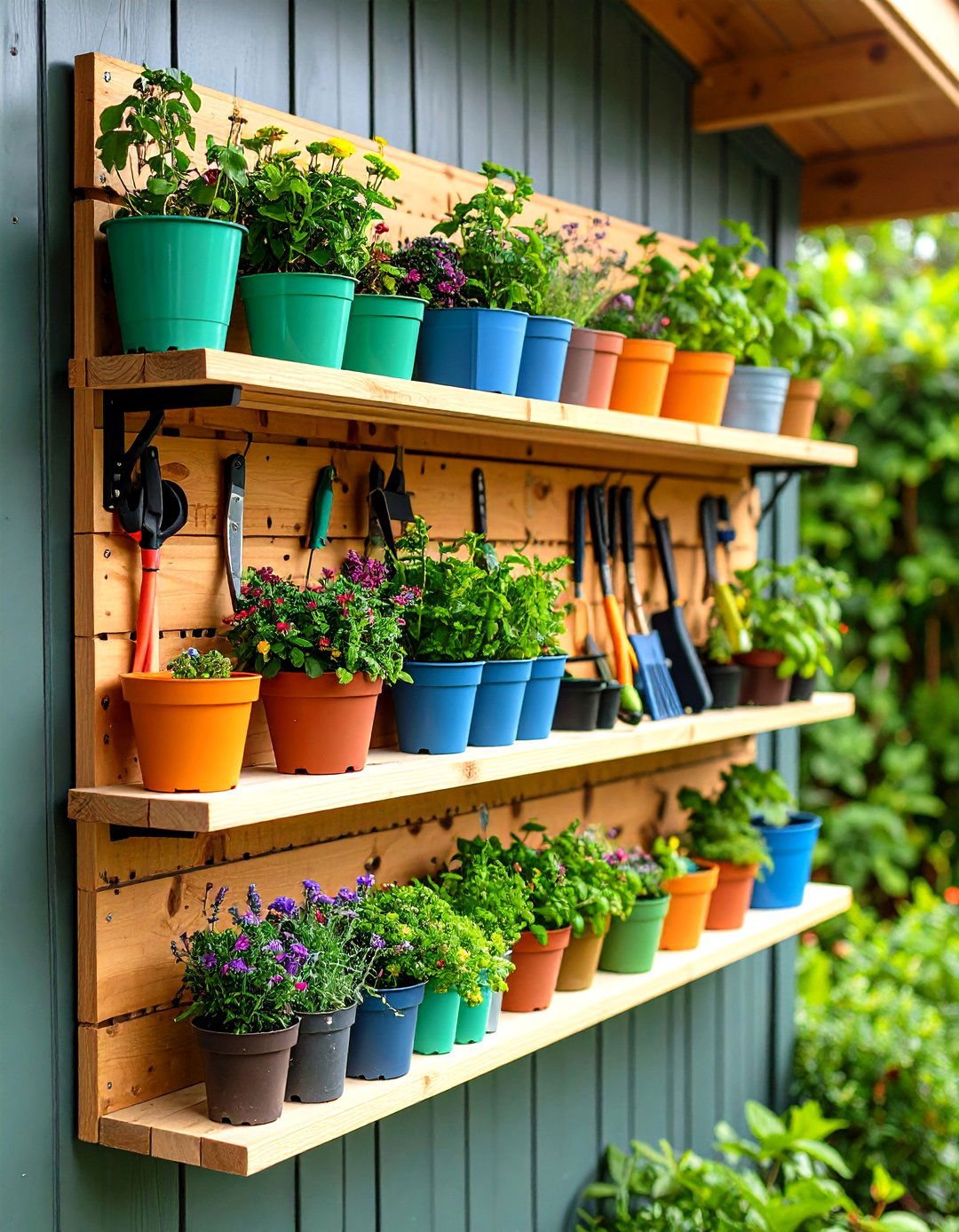
Floating shelves make use of idle wall space to hold planters, small tools, and supplies without the bulk of traditional shelving. They’re easy to install and help clear floor clutter, making the shed feel larger and more open. Ideal spots include above workbenches or along sidewalls, where they can store spray cans, seed packets, or lightweight containers. By distributing storage vertically, floating shelves keep essentials at eye level and ensure you don’t lose small items among larger equipment.
2. Adjustable Shelving
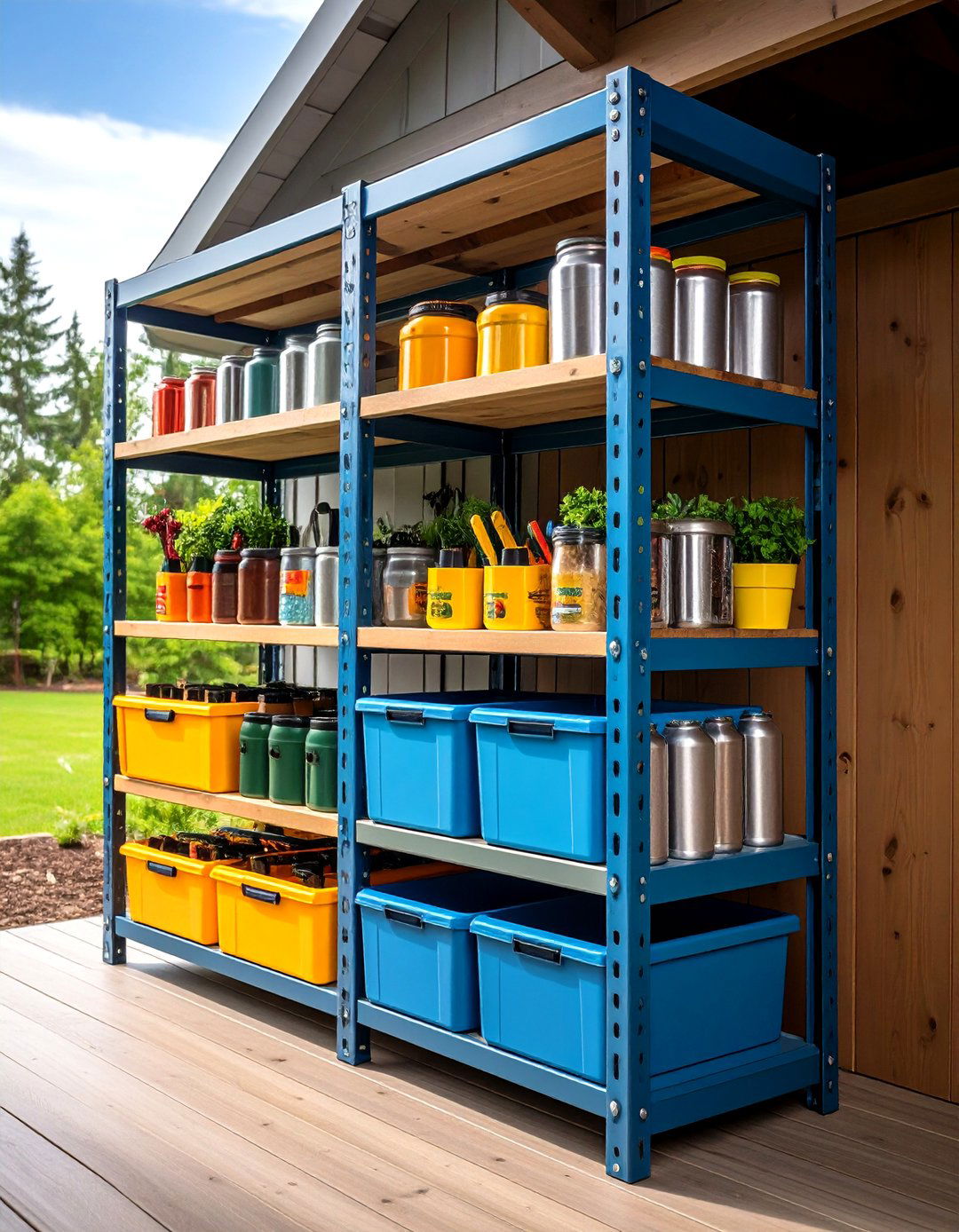
Adjustable shelving lets you tailor shelf heights to suit a variety of items, from tall paint cans to low-profile toolboxes. Systems with slotted uprights and movable brackets allow quick reconfiguration as your storage needs change. Place frequently used items on lower shelves for ease of access, and utilize upper shelves for seasonal or infrequently accessed supplies. Sturdy metal or reinforced plastic units withstand heavier loads, and installing multiple units side by side creates a cohesive, floor-to-ceiling storage wall.
3. Freestanding Metal Shelving
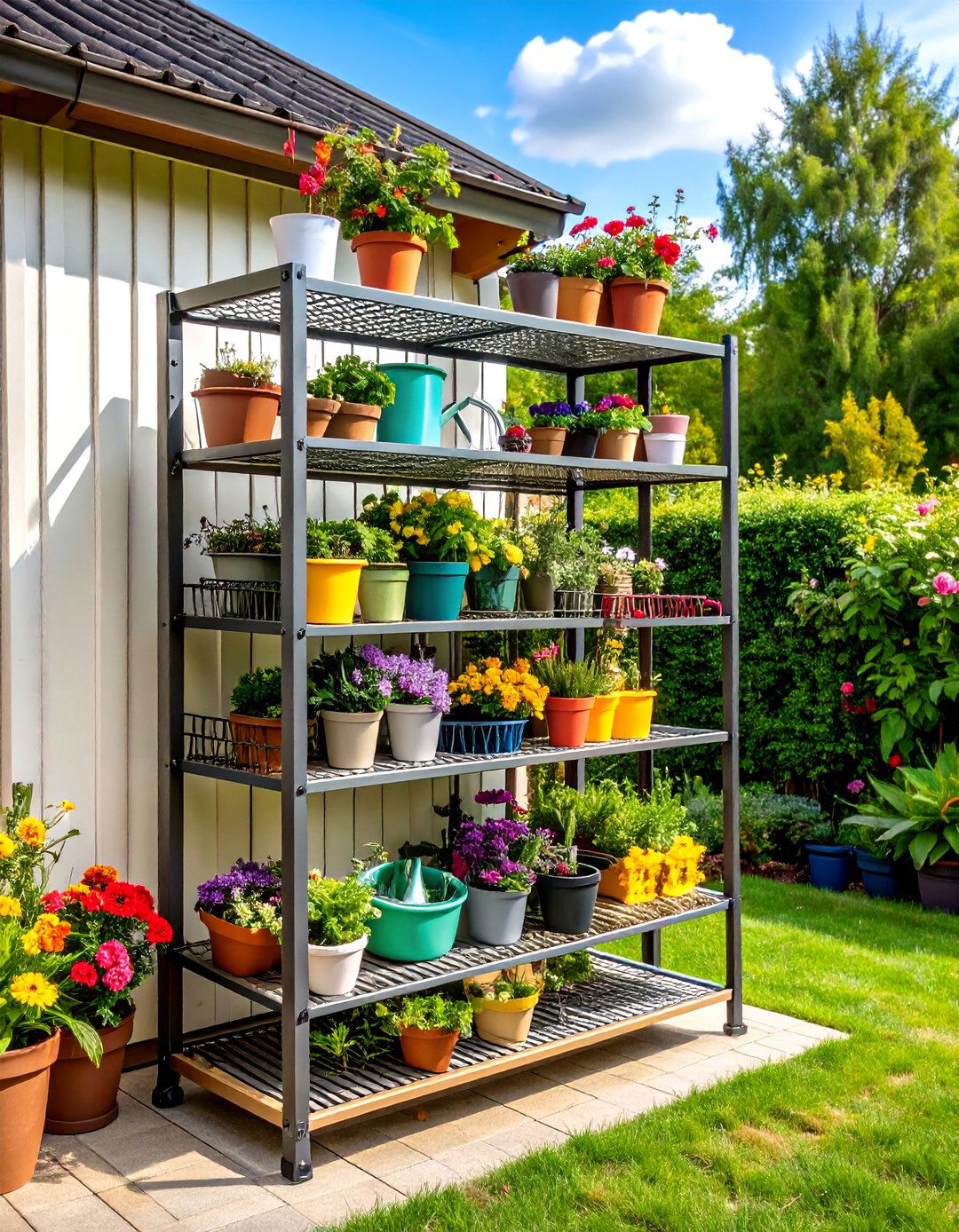
Freestanding metal racks offer a customizable, durable solution for storing bulky items like lawn mowers or stacked totes. Their open-wire design prevents dust buildup and allows you to see contents from any angle. Adjustable wire shelves can be spaced to fit odd-shaped equipment, while caster wheels add mobility for deep-shed positions. Because metal shelving resists moisture and pests, it’s especially suited to outdoor or uninsulated sheds, protecting your belongings from humidity and insect damage.
4. Pegboard Systems
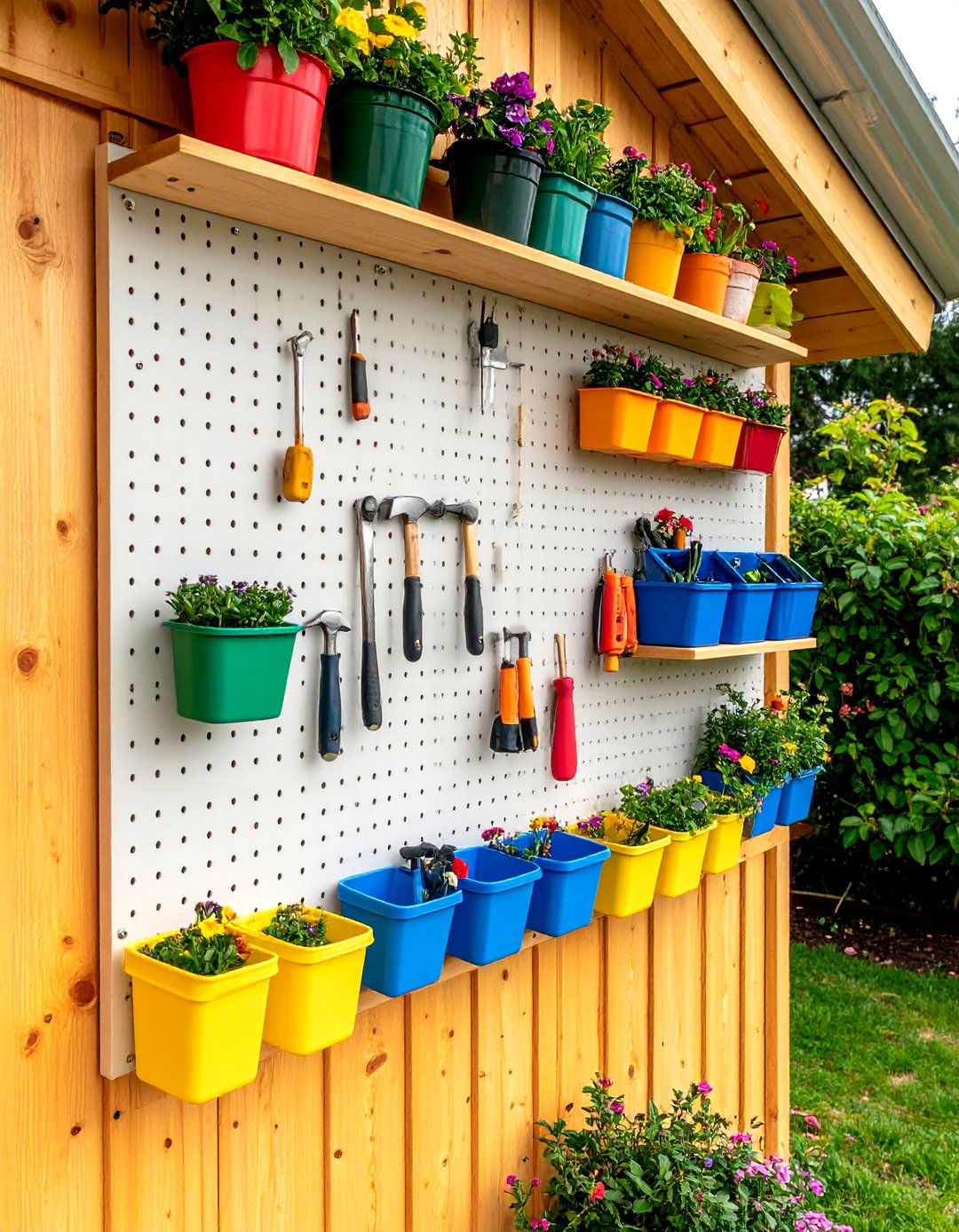
Pegboards transform a blank wall into a versatile tool display. Simply hang the board and arrange hooks, bins, and brackets to suit your collection of hand tools, gardening implements, and hardware. The repositionable hooks adapt as your toolkit evolves, and small baskets help contain nuts, bolts, and tape. For added stability, mount pegboards over backing panels to support heavier items. Visually scanning a pegboard makes locating and returning tools intuitive, reducing time spent searching and keeping surfaces clear.
5. Wall-Mounted Hooks and Racks
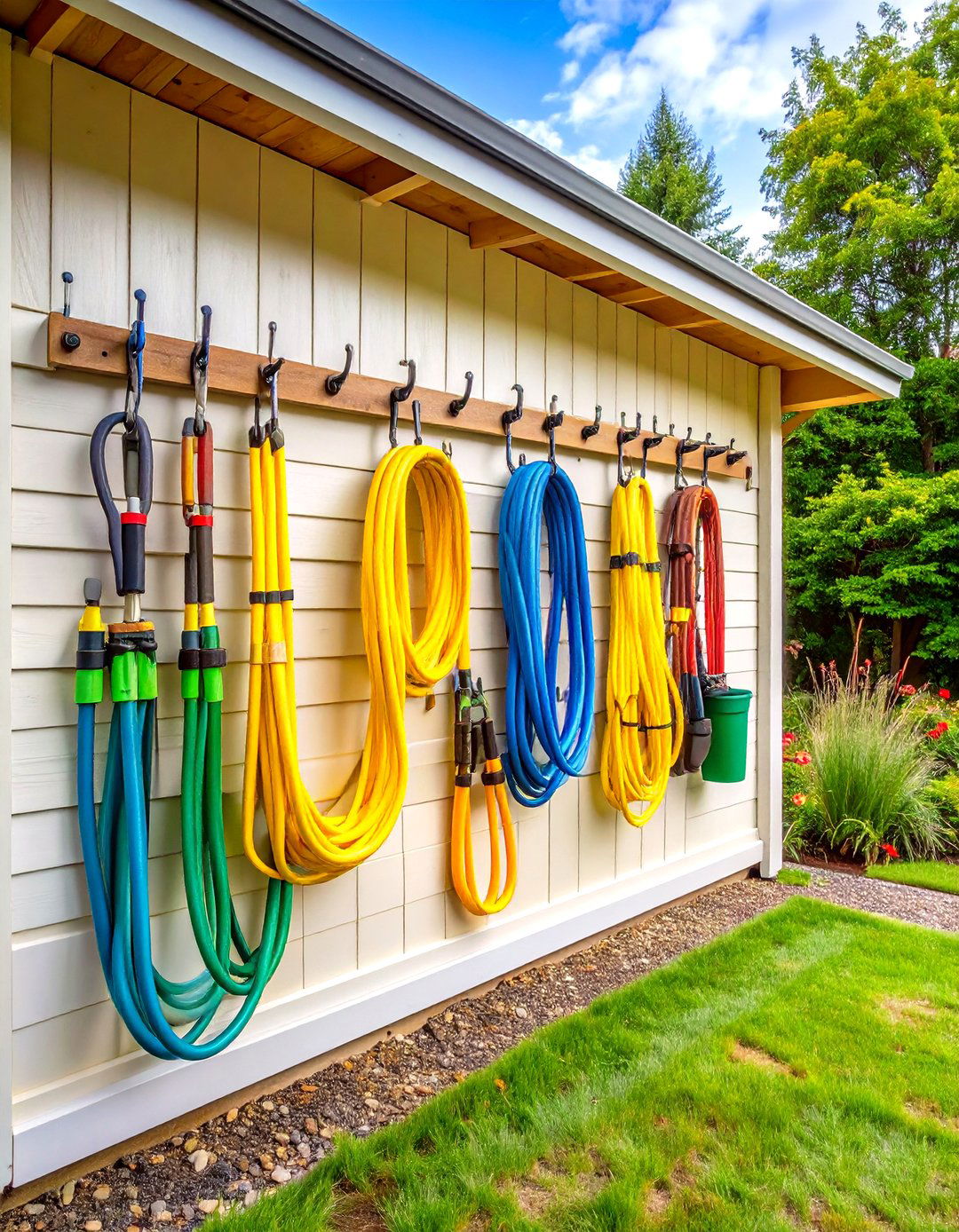
Heavy-duty hooks and racks secure bulky items—bicycles, hoses, ladders—off the floor and out of harm’s way. Screw in J-hooks for ropes or hoses, install bracket racks for ladders, and opt for slatwall panels with adjustable slots for flexibility. Specialty racks, like rake and shovel holders, keep long-handled tools upright and prevent them from tipping. Group similar items together to create intuitive zones, and leave a clear path to access frequently used equipment without moving other possessions.
6. Overhead Storage Racks
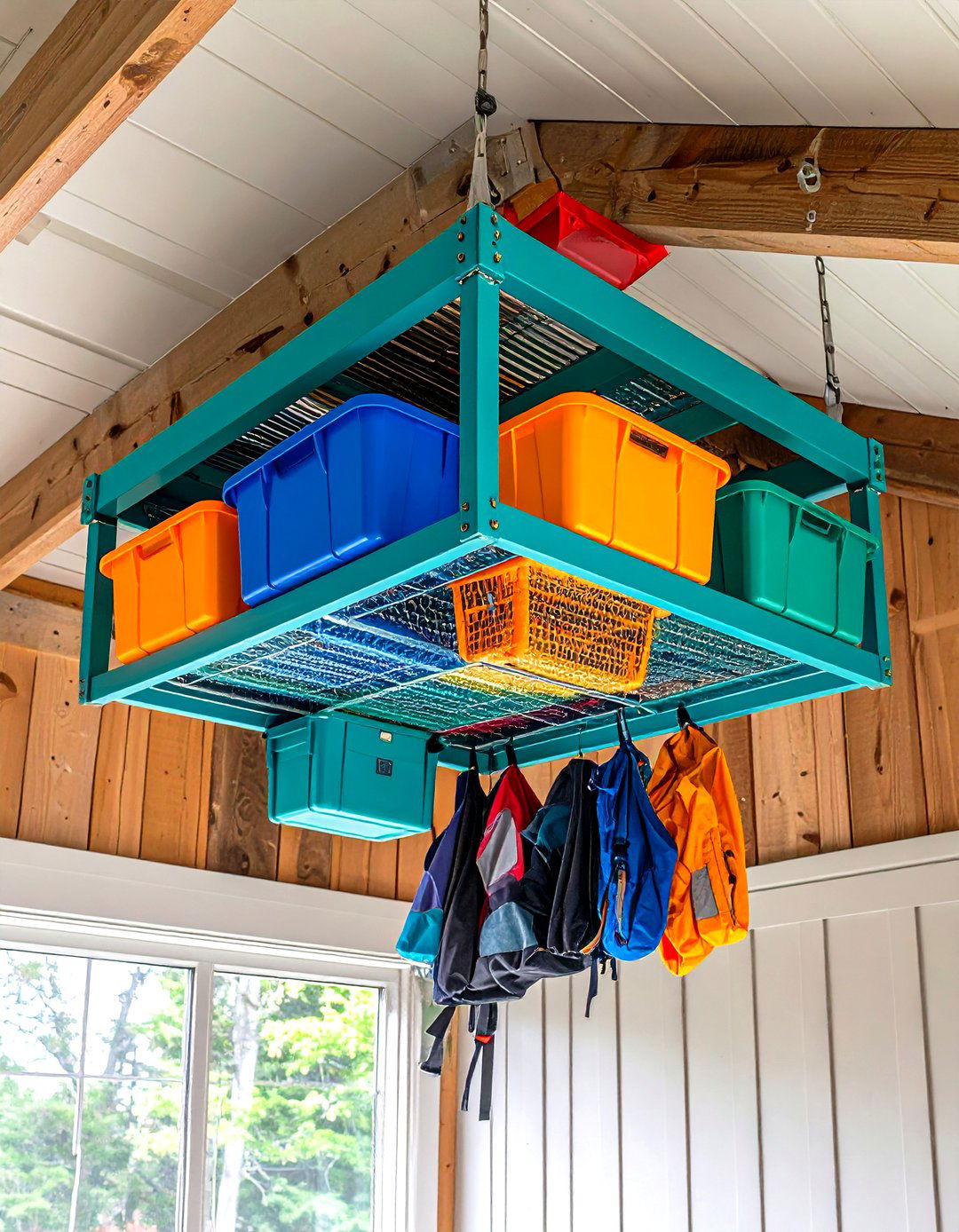
Utilize ceiling space with overhead racks designed to hold totes, seasonal gear, or rarely used items. Metal grid platforms attach to ceiling joists, keeping bulky bins safely out of the way yet accessible with a sturdy step stool. This strategy is perfect for holiday decorations, camping gear, or bulk storage, freeing floor and wall space for daily-use tools. Ensure proper weight distribution and secure installation to avoid sagging, and label each bin clearly for quick identification.
7. Clear Plastic Bins with Labels
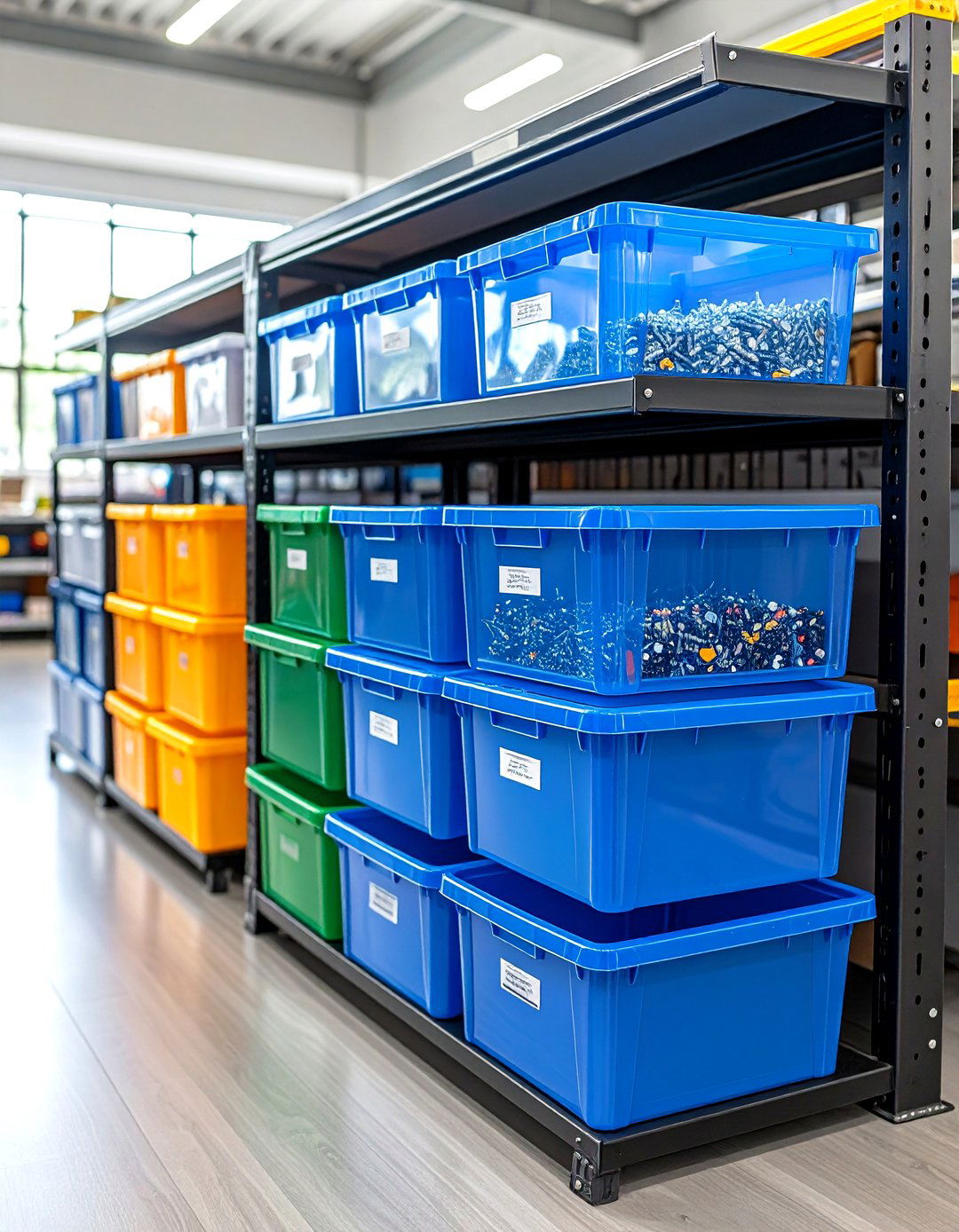
Storing hardware and small parts in clear plastic bins allows you to see contents at a glance. Choose stackable containers with tight-fitting lids to protect against dust and moisture. Use a label maker or waterproof marker to denote contents—nails, screws, brackets—on both the lid and side for easy retrieval even when bins are stacked. Group bins by category on dedicated shelves or in cubbies, and reserve one shelf solely for frequently accessed supplies to streamline your workflow.
8. Mason Jar Storage
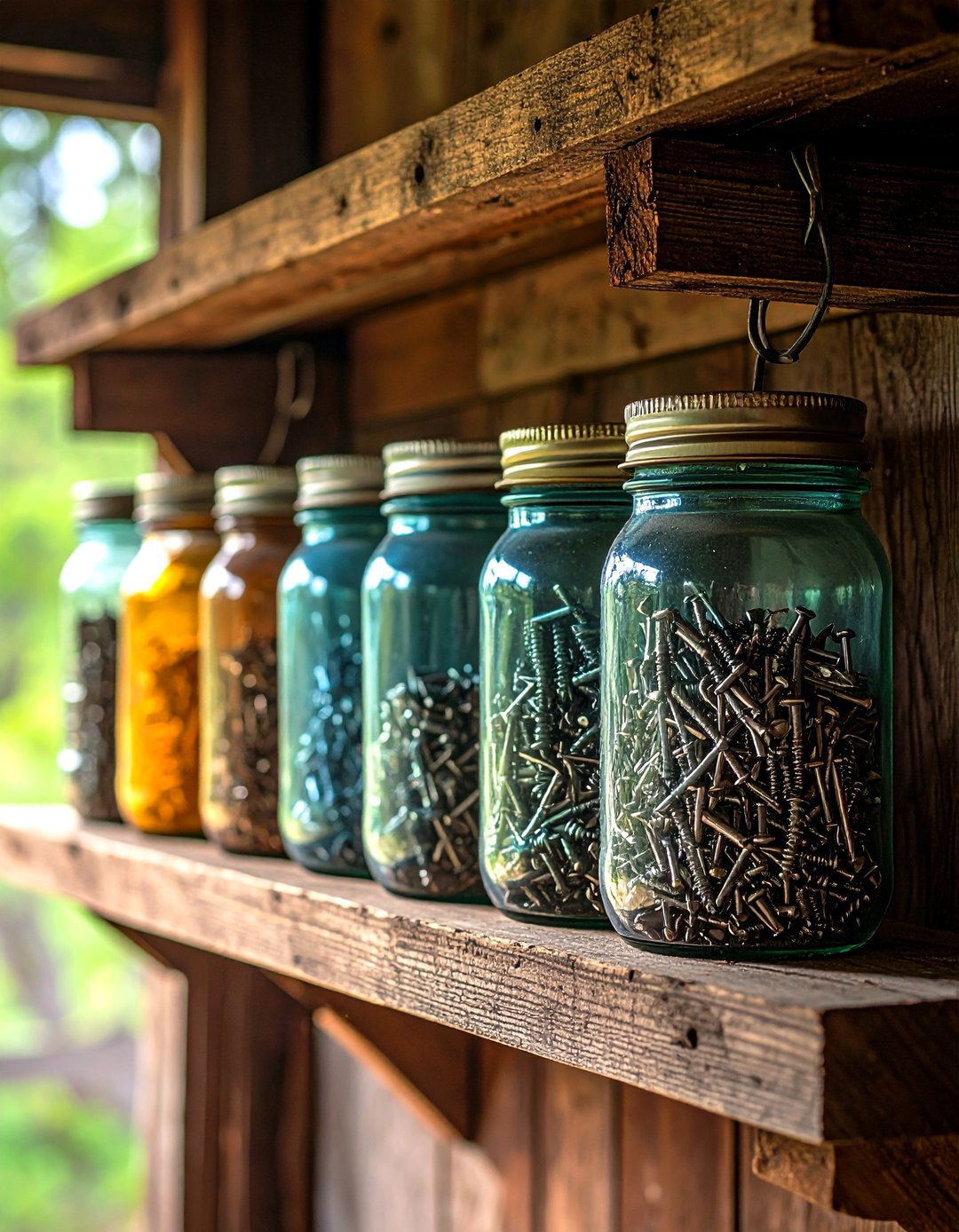
Mason jars repurpose elegantly for organizing screws, nails, and other small hardware. Screw jar lids to the underside of shelves or inside cabinet doors, then fill each jar and secure it by twisting on the lid. Transparent glass makes content levels immediately visible, and jars can be unscrewed from their bases for easy access. This cost-effective hack not only recycles materials but also adds a vintage charm to your shed interior.
9. Tool Hangars and Hangers
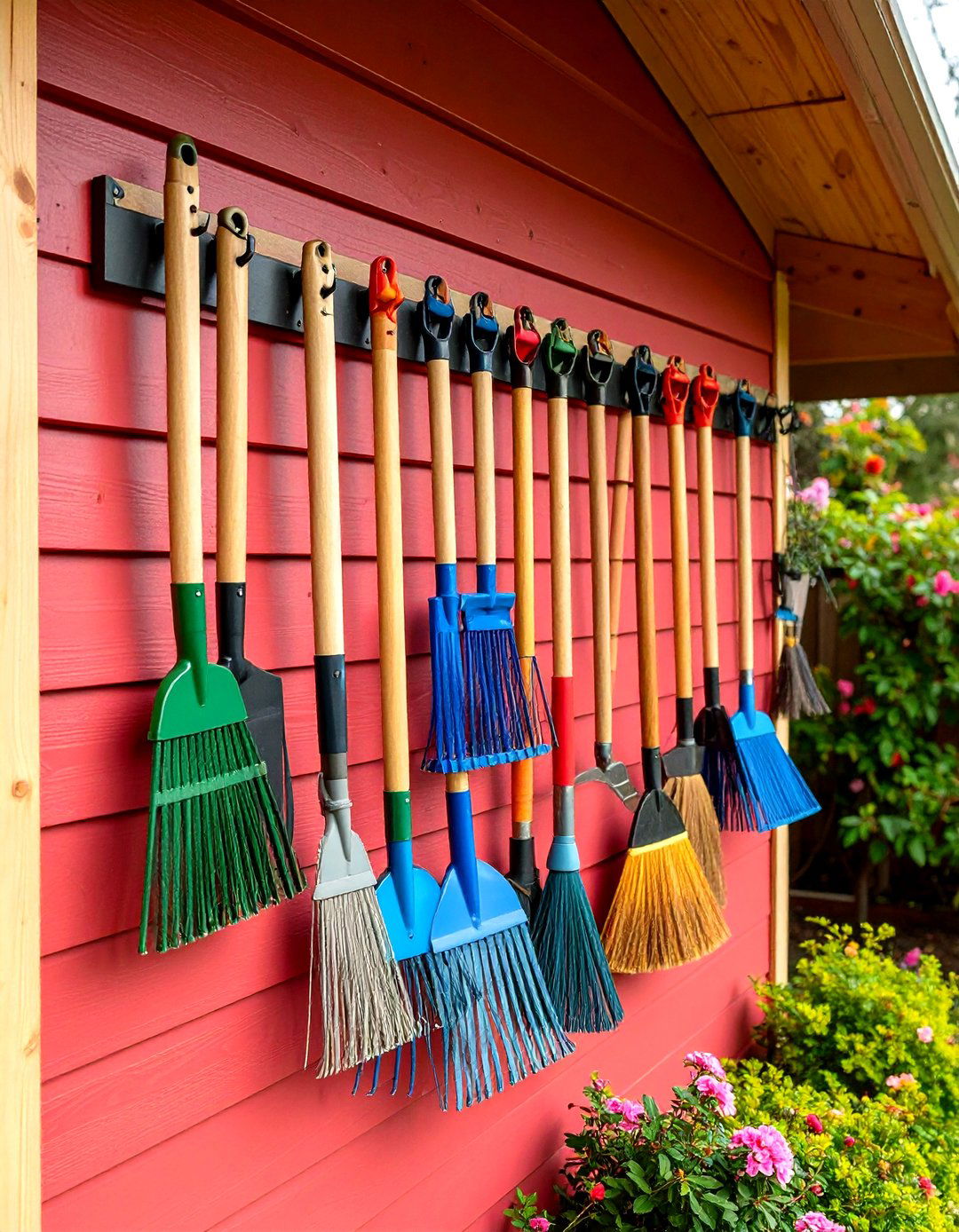
Specialized tool hangars clamp onto handles of rakes, shovels, and brooms, holding them vertically against the wall. They prevent tipping and provide quick access without wrestling with awkward angles. Select rubber-coated grips to protect tool handles and reduce vibration noise. Install a row of hangars at a consistent height for a clean, streamlined look, and combine with wall tracks or slatwall panels for future expandability.
10. Wooden Crate Stacks
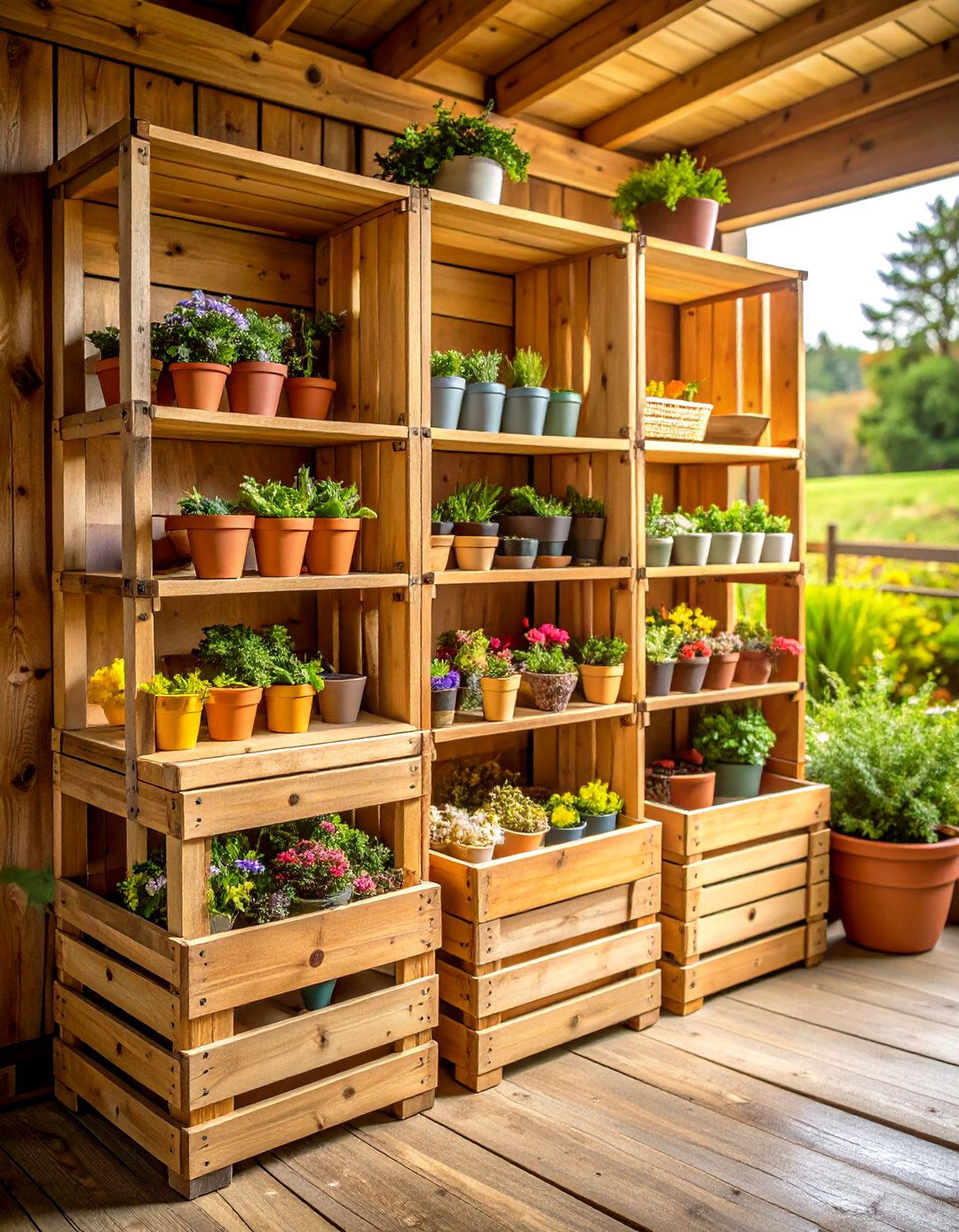
Stack wooden crates to create modular, rustic shelving units ideal for pots, fertilizers, or sports equipment. Crates can be arranged horizontally or vertically and secured with screws or brackets for stability. The open-slat design provides ventilation for damp items, preventing mildew, and crates can be painted or stained to match your shed décor. This DIY method allows unlimited configurations and is easily adjusted as needs evolve.
11. Repurposed Bookshelves
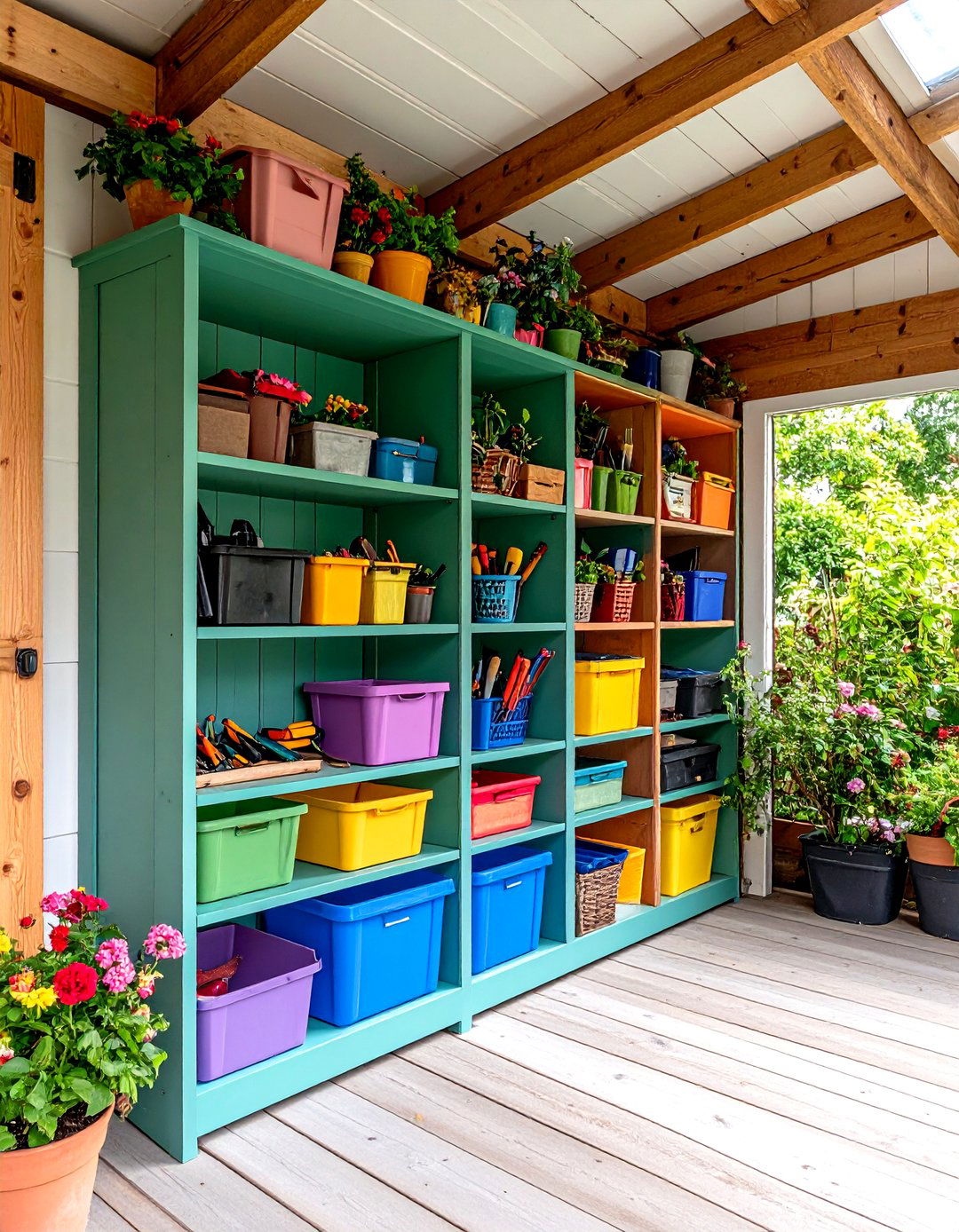
Free standing bookshelves make unexpected but effective storage for bins and tools. Their adjustable shelves accommodate various heights, and enclosed backs prevent items from falling through gaps. Anchor tall units to wall studs to prevent tipping, and dedicate each shelf to a category—garden, automotive, sports—to maintain order. Paint or seal shelves for moisture resistance, and add decorative baskets or boxes to conceal smaller items.
12. Pallet Storage Solutions
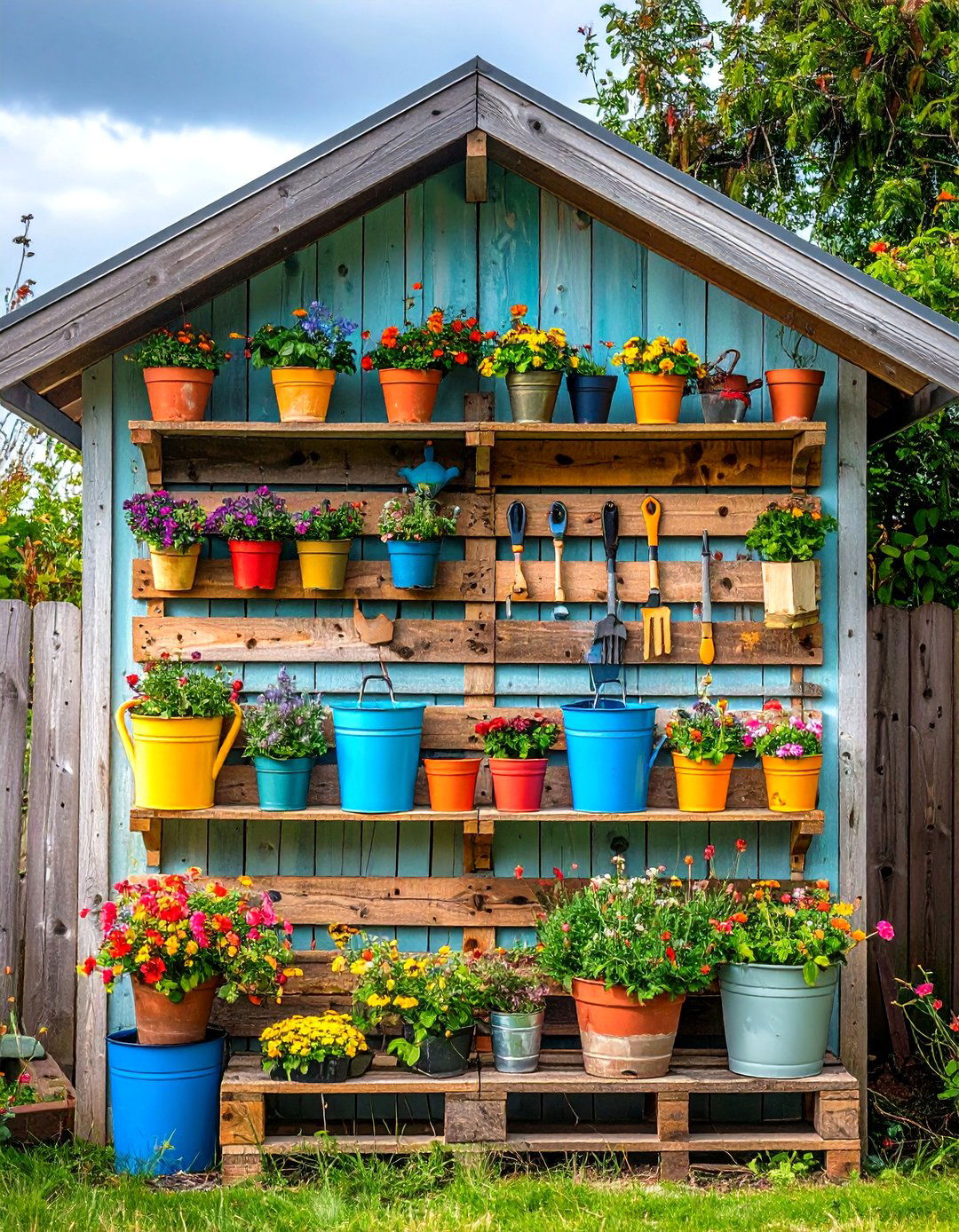
Convert wooden pallets into vertical storage panels. Sand and seal pallets, then mount them to a shed wall for sturdy hanging. Use S-hooks or brackets to hold tools, pots, and baskets. Pallets offer ready-made slats for hook insertion and can be easily trimmed to fit awkward spaces. Their industrial look suits rustic barn-style sheds and provides a budget-friendly pegboard alternative.
13. Mobile Carts and Totes

Rolling utility carts serve as portable workstations and storage hubs. Load one cart with frequently used tools and move it to your workspace, then tuck it away when done. Multi-tiered carts with locking casters ensure stability and easy transport. For smaller items, canvas garden totes with pockets keep everything in one place and can be hung or stored on shelves. Mobility reduces trips back and forth and adapts to changing project locations.
14. Door-Back Organizers
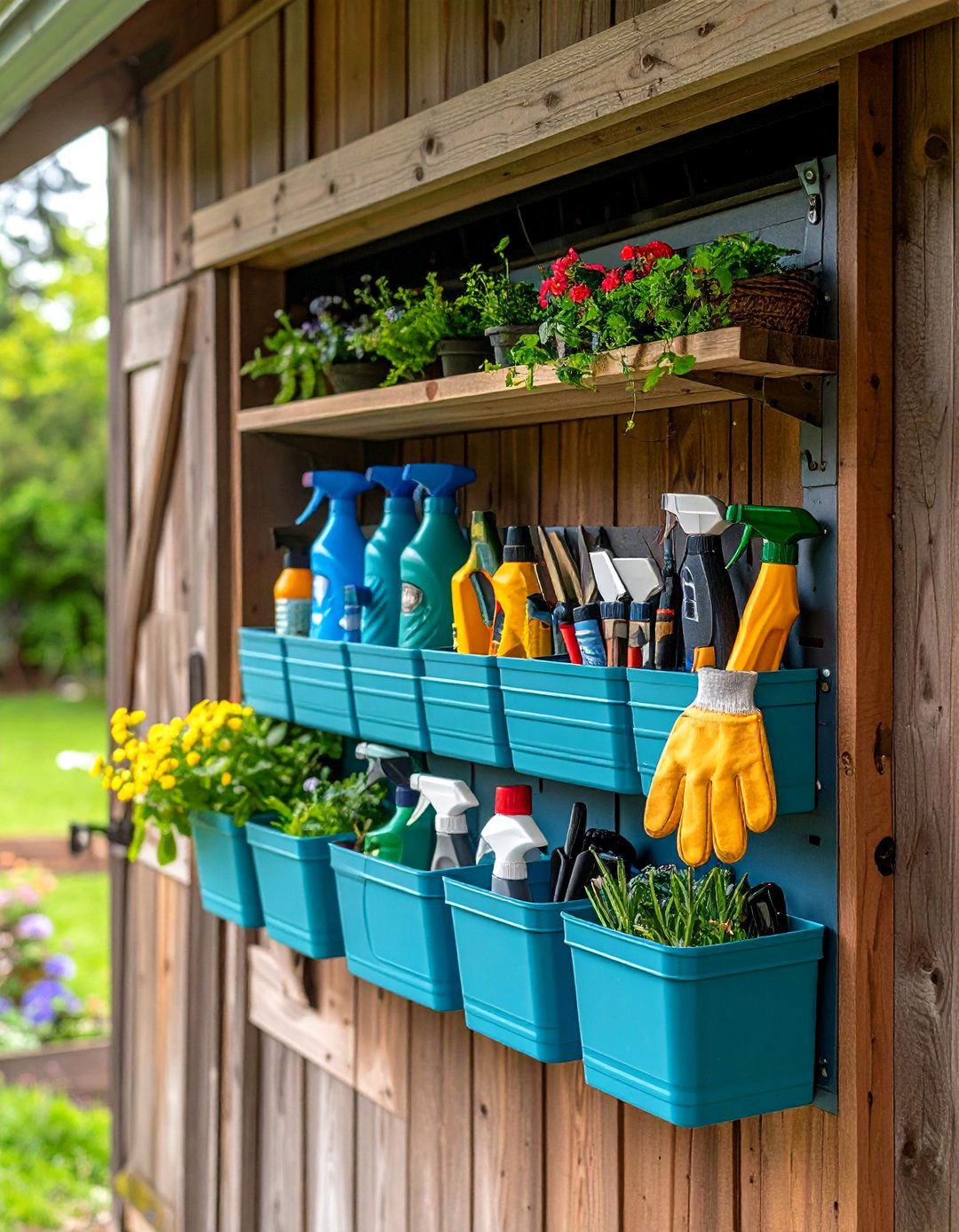
The back of the shed door is prime real estate for storage. Install over-door racks, shoe-style pockets, or narrow shelves to hold hand tools, spray bottles, or gloves. This keeps items off counters and within arm’s reach as you enter. Lightweight materials ensure the door closes smoothly, and clear pockets help you see stored items without opening compartments. Group similar tools together—pruners, trowels, gloves—to streamline selection.
15. Magnetic Tool Strips
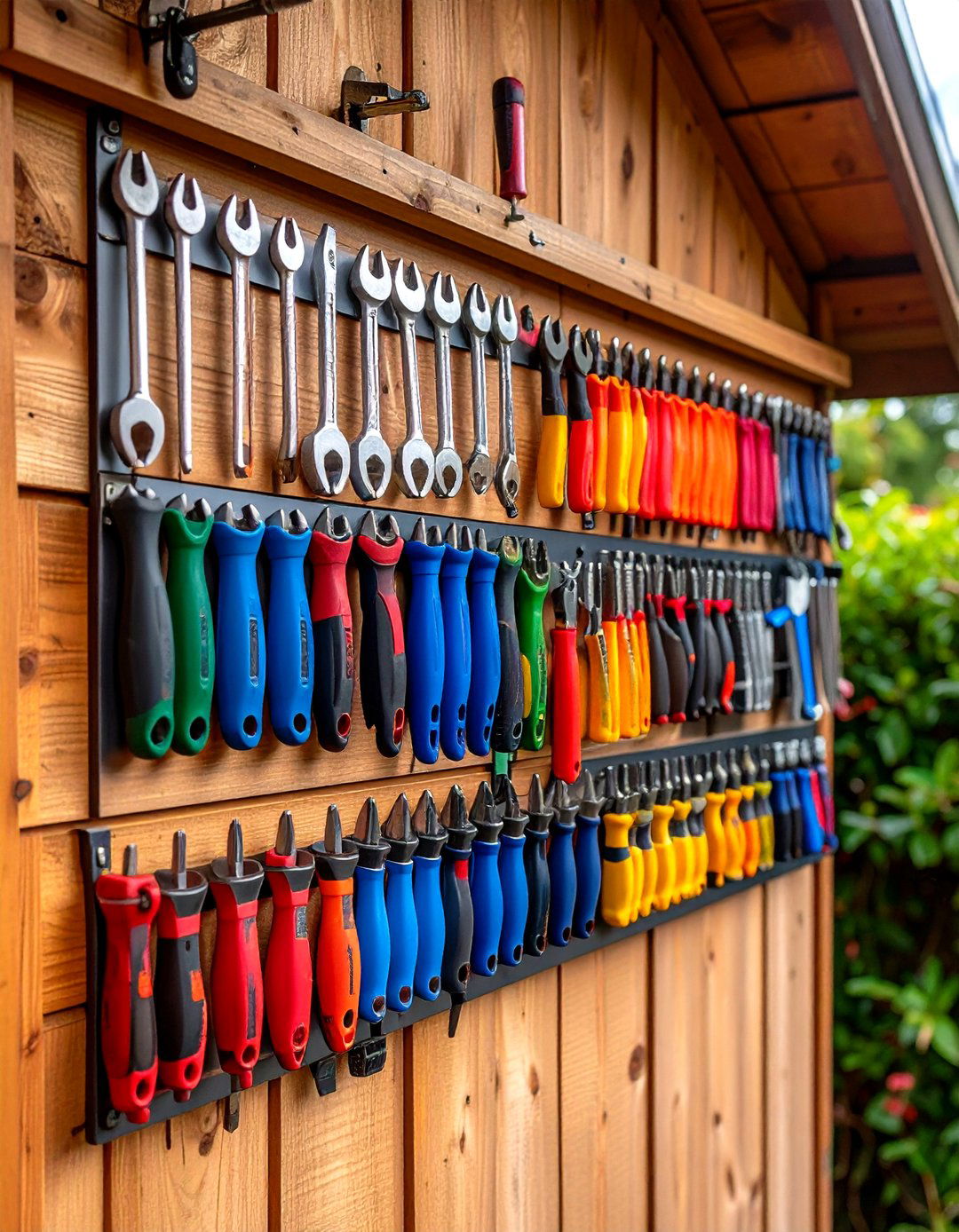
Magnetic strips adhere to walls or workbench edges and hold metal tools—wrenches, screwdrivers, shears—securely in place. They eliminate cluttered drawers and display tools for quick grabs. Mount strips at eye level and organize tools by size or type. This system works well inside cabinets or along bench under-shelves, keeping flat surfaces clear and tools visible.
16. Drawer Organizers and Liners
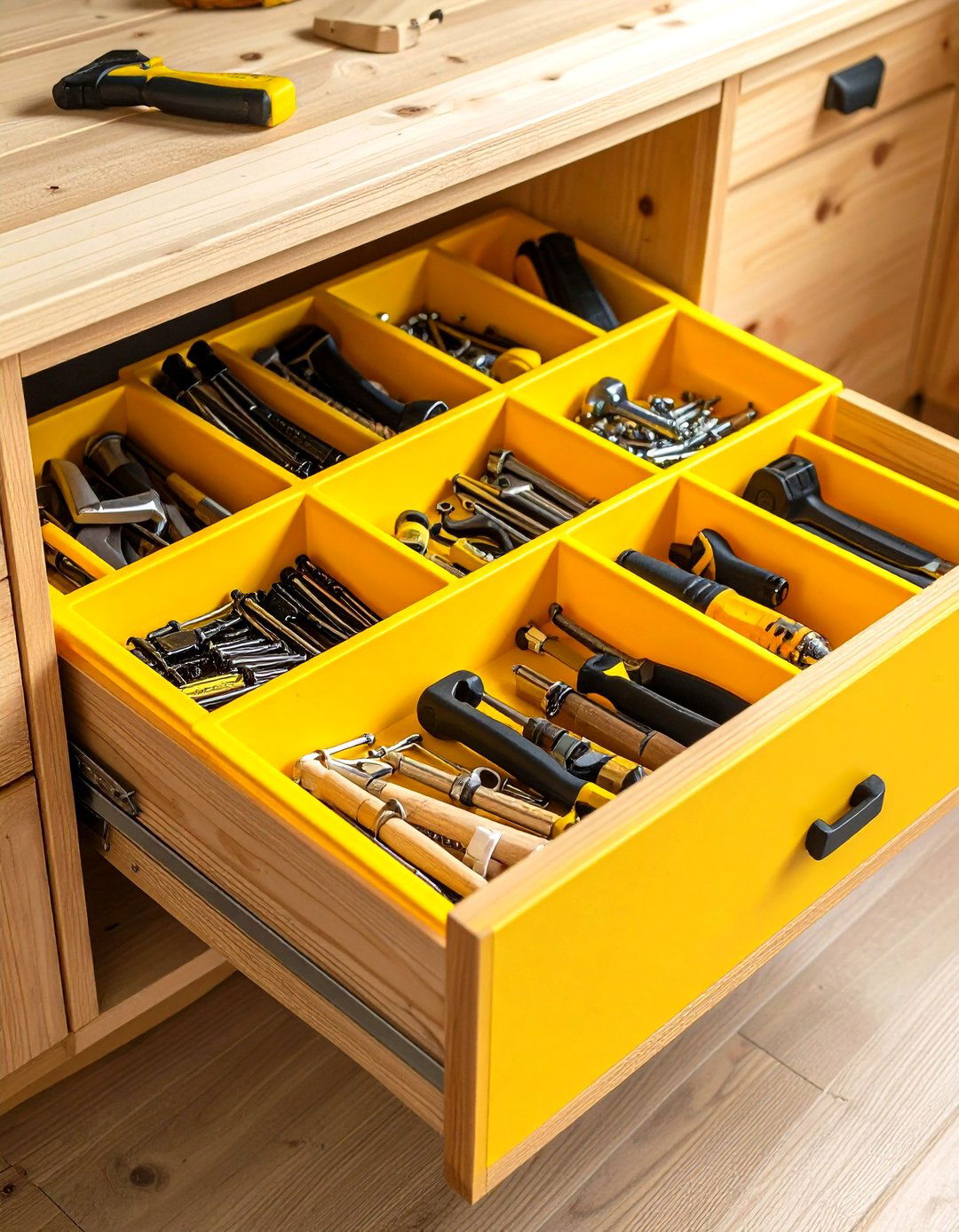
If your shed has drawers, insert foam or plastic liners with compartments to separate small parts and hand tools. Non-slip liners prevent items from shifting when drawers open or close, protecting both the drawer and tools. Use drawer dividers to create customized sections, ensuring each tool has a home. This aids in maintaining order and speeds up tool retrieval during projects.
17. PVC Pipe Storage
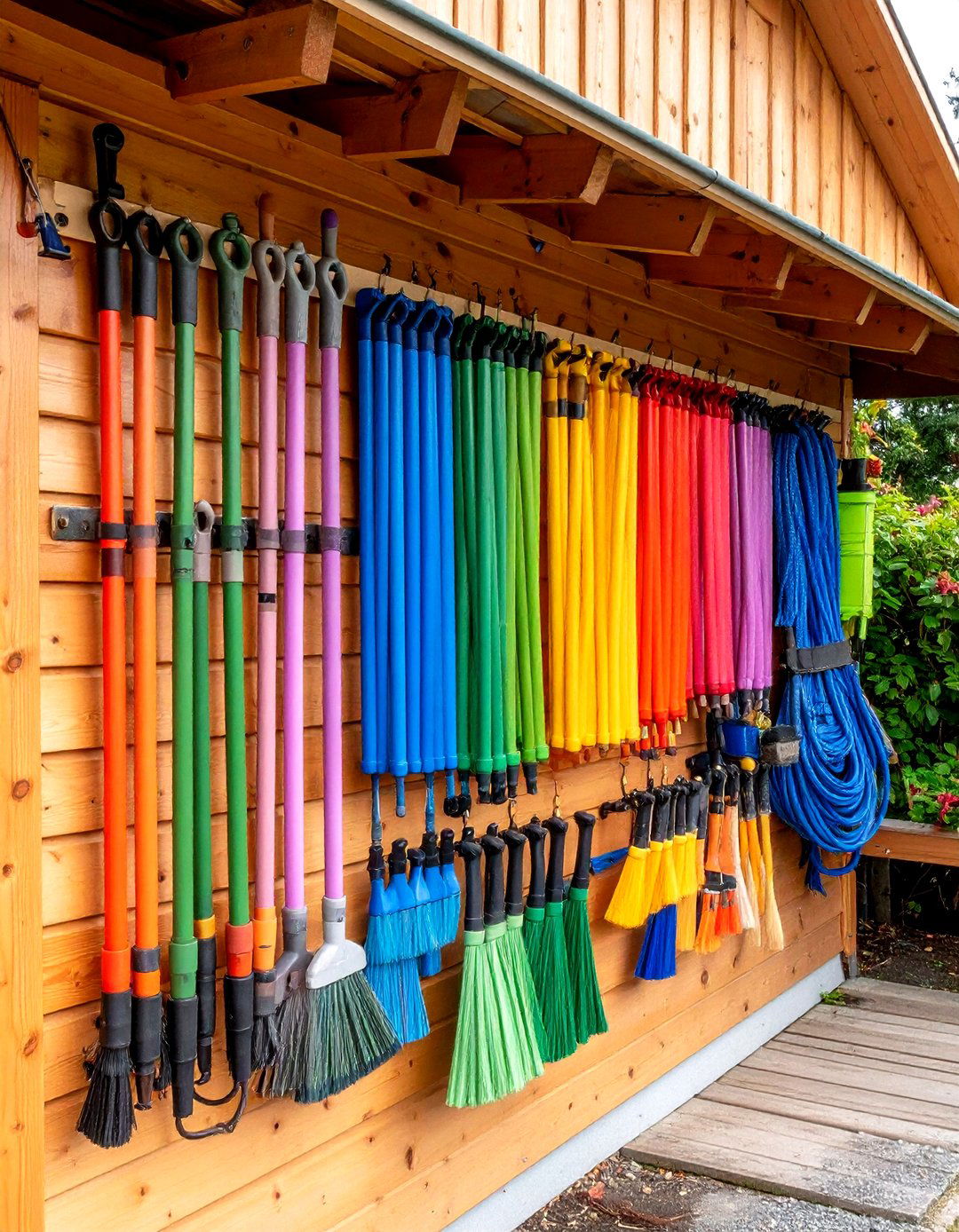
Cut sections of PVC pipe and attach them vertically to a wall to store long, slender items—brooms, drill bits, fishing rods. Pipes hold items upright and prevent them from falling over in a corner. Group pipes in rows or clusters, and secure with flush-mount brackets. Painting the pipes improves aesthetics and seals plastic surfaces.
18. Garden Tote Stations
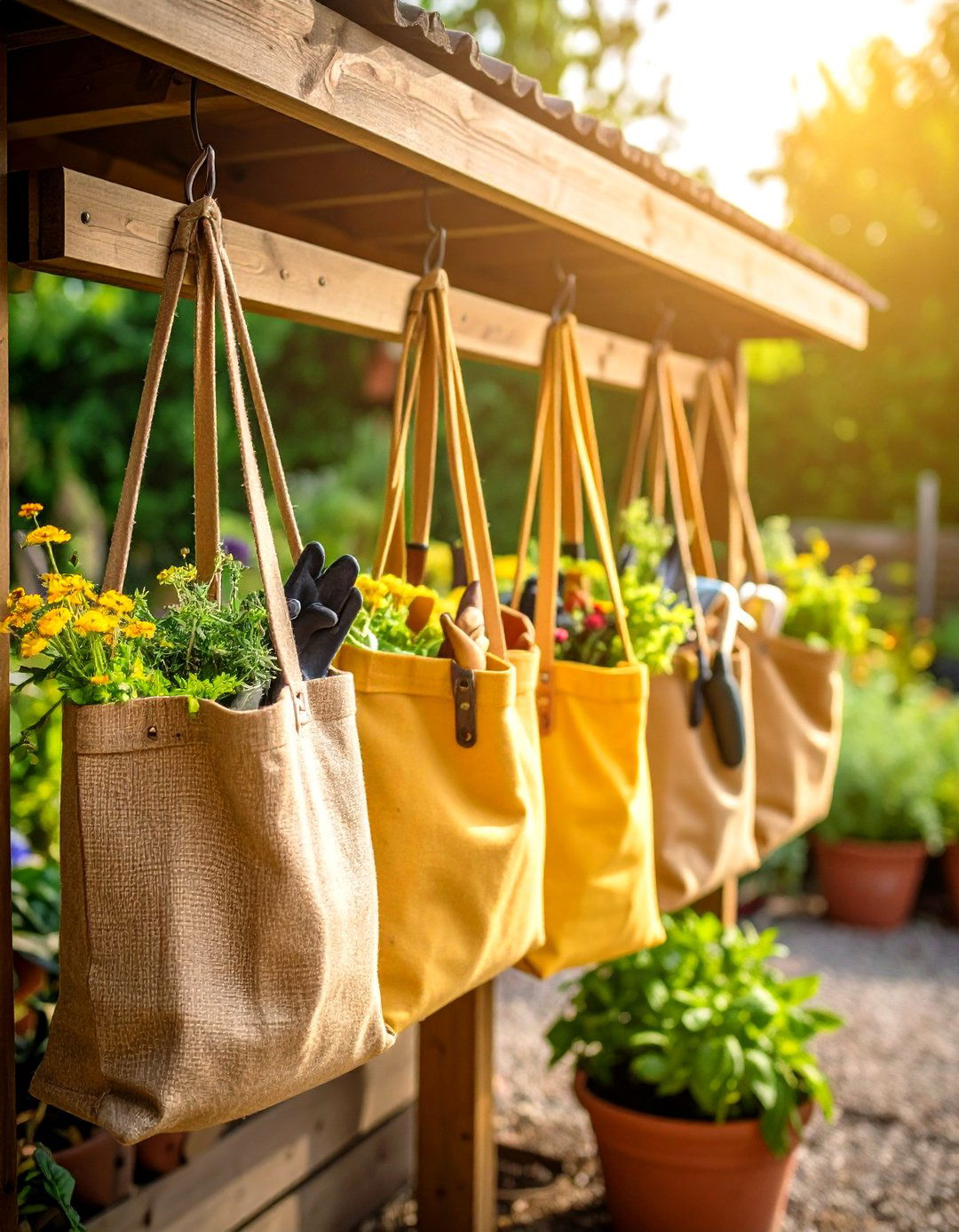
Create a designated potting station with hanging canvases or sturdy totes for garden tools, seeds, and gloves. These can be hung on hooks or stored on lower shelves for mobile use. When you need to plant, simply grab the tote and carry it to your workspace. Afterward, hang it back to dry any residual soil. This keeps your workspace clean and tools contained.
19. Seasonal Rotation Zones
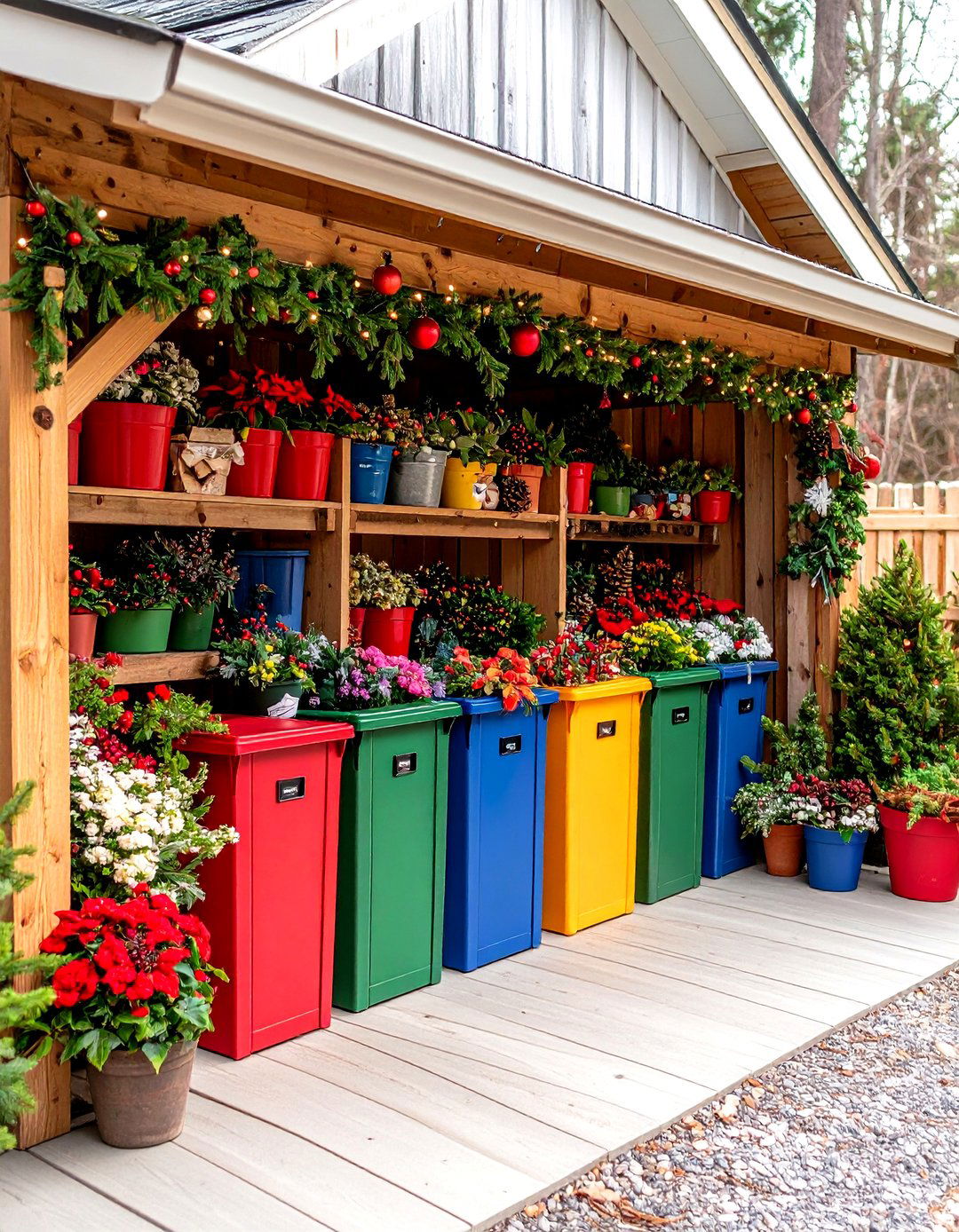
Dedicate specific areas or shelves for seasonal items—holiday decorations, winter yard tools, summer sports gear. Rotate these zones twice a year to bring current-season items to the front and store off-season supplies at the back or in overhead racks. Label each zone clearly and maintain an inventory list to avoid rediscovering forgotten boxes. This approach streamlines seasonal transitions and prevents year-round clutter.
20. Lighting and Workspace Setup

Adequate lighting transforms a dark shed into a functional workshop. Install LED overhead fixtures and task lights over workbenches. Motion-sensor lights can illuminate dark corners and automatically turn off to save energy. Clear surfaces and visible tools enhance safety and efficiency. Combine lighting with durable work surfaces—fold-down benches or mounted countertops—to create a dedicated project area. A well-lit, organized space invites productivity and keeps clutter under control.
Conclusion:
By layering these twenty organization strategies—vertical shelving, wall-mounted systems, clear storage bins, and dedicated zones—you can transform any shed into a functional, clutter-free haven. Incorporating DIY solutions like pallet walls and mason jar stations maximizes budget and creativity, while commercial options such as adjustable racks and magnetic strips provide durable, professional results. Proper labeling, lighting, and seasonal rotation ensure long-term order, and mobile elements like utility carts add adaptability. With thoughtful planning and consistent maintenance, your shed will serve not just as storage, but as a productive extension of your home.



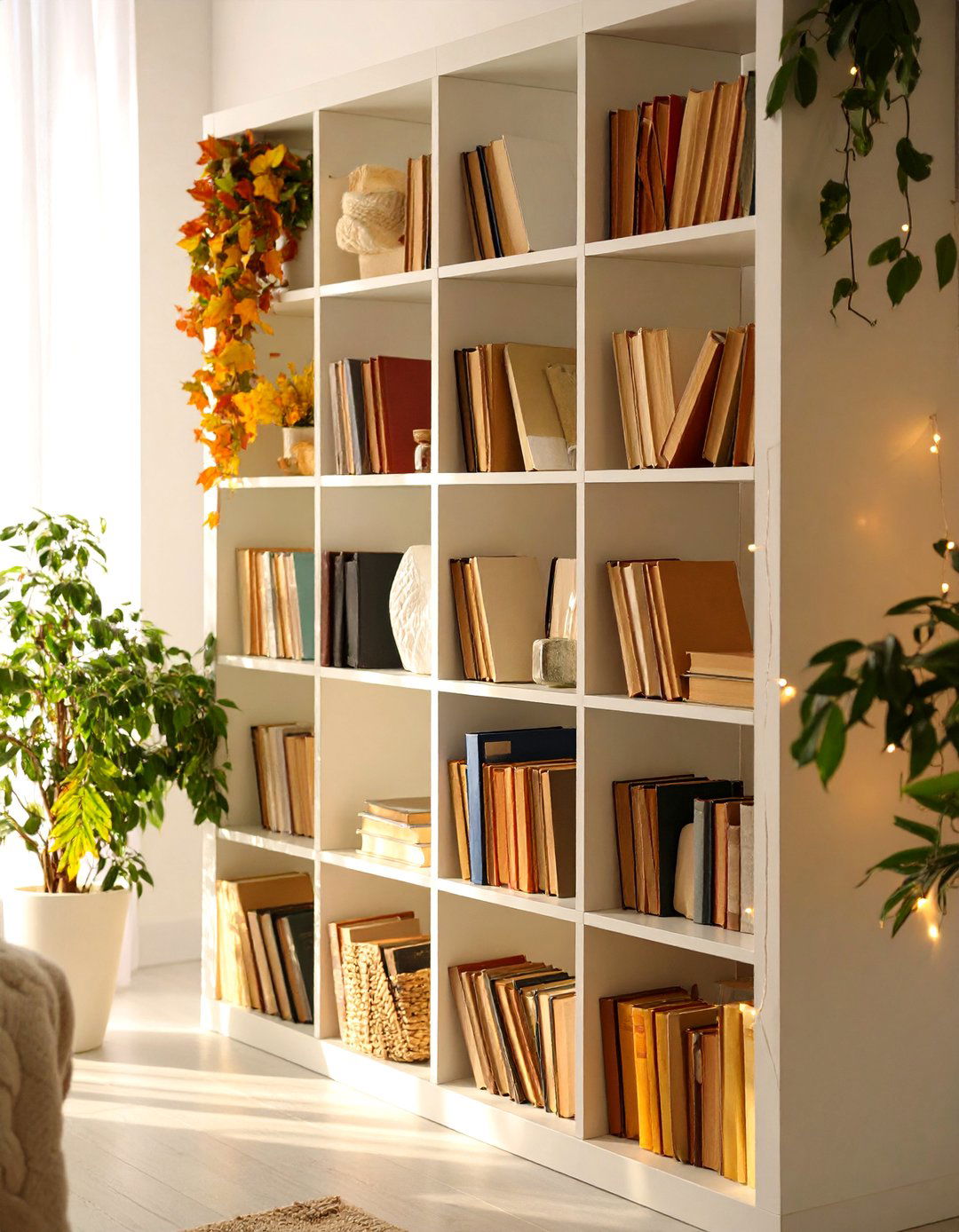

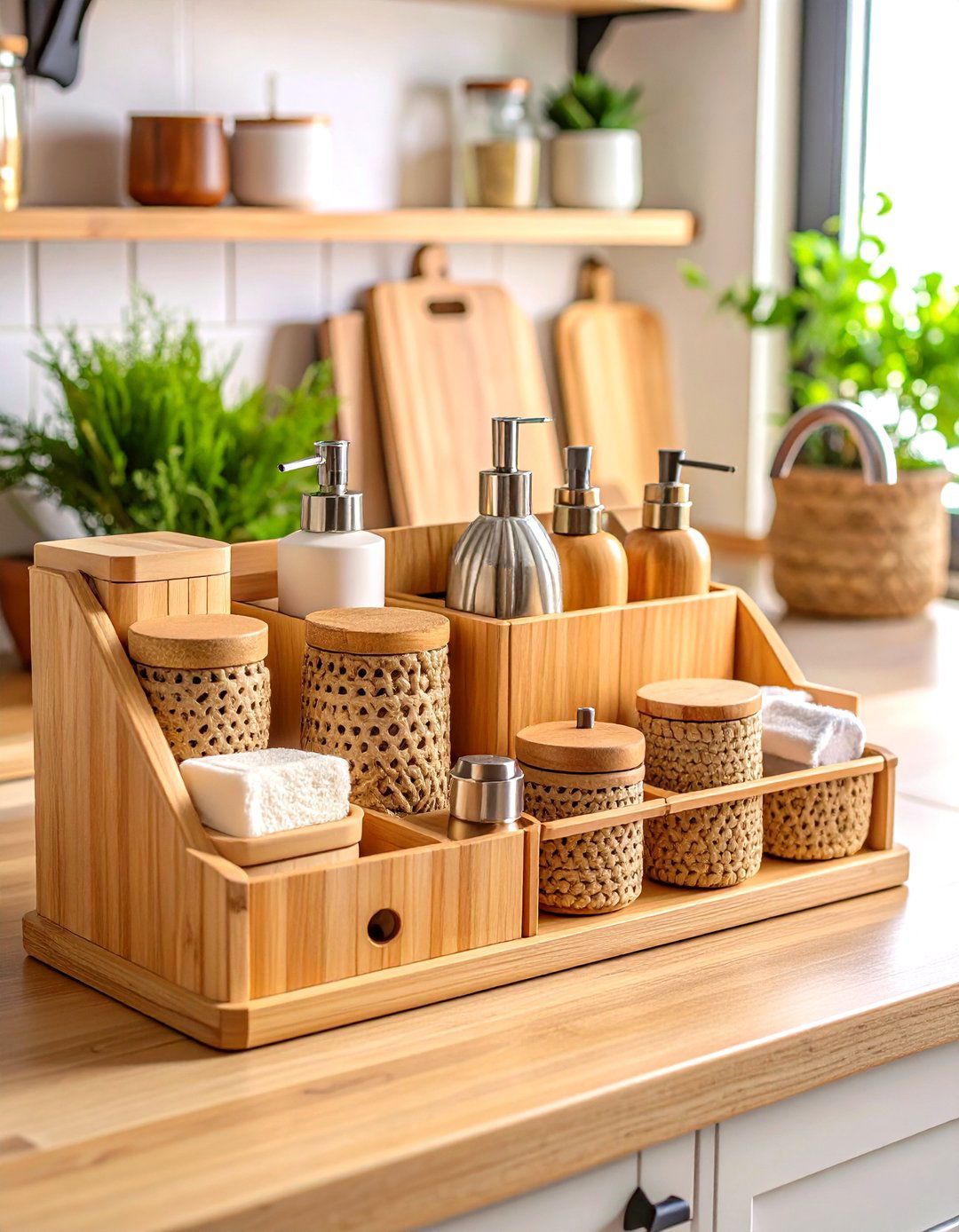
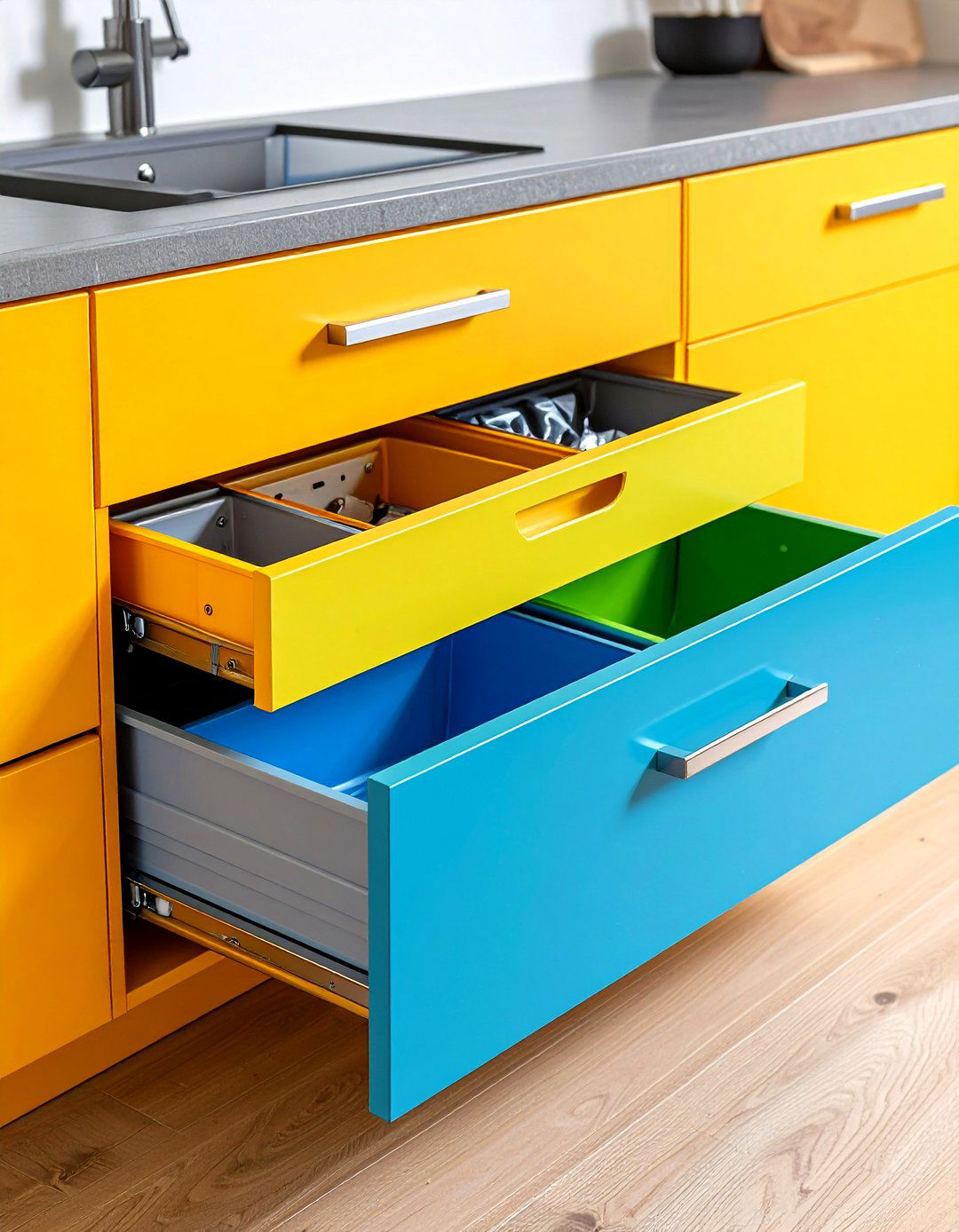
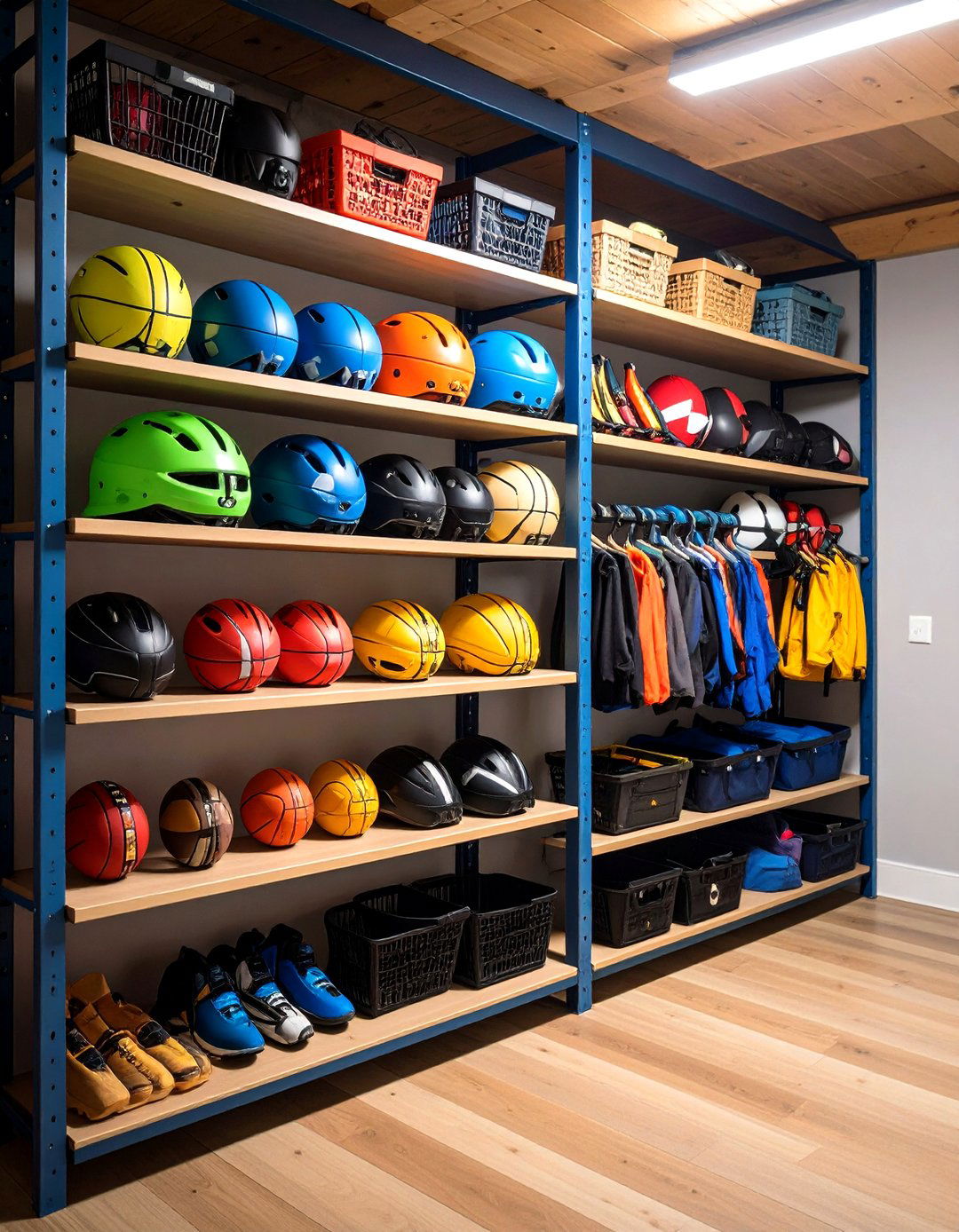
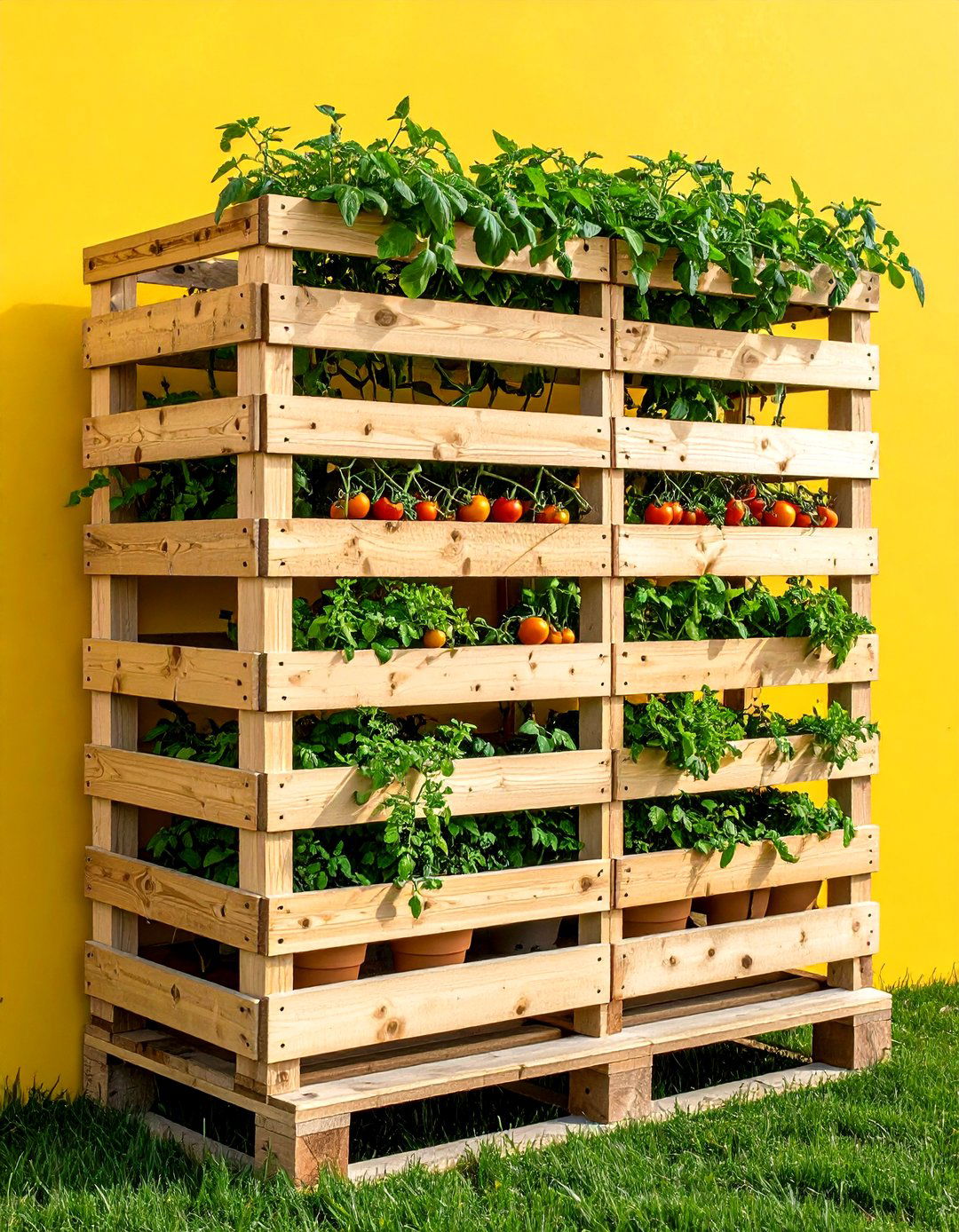

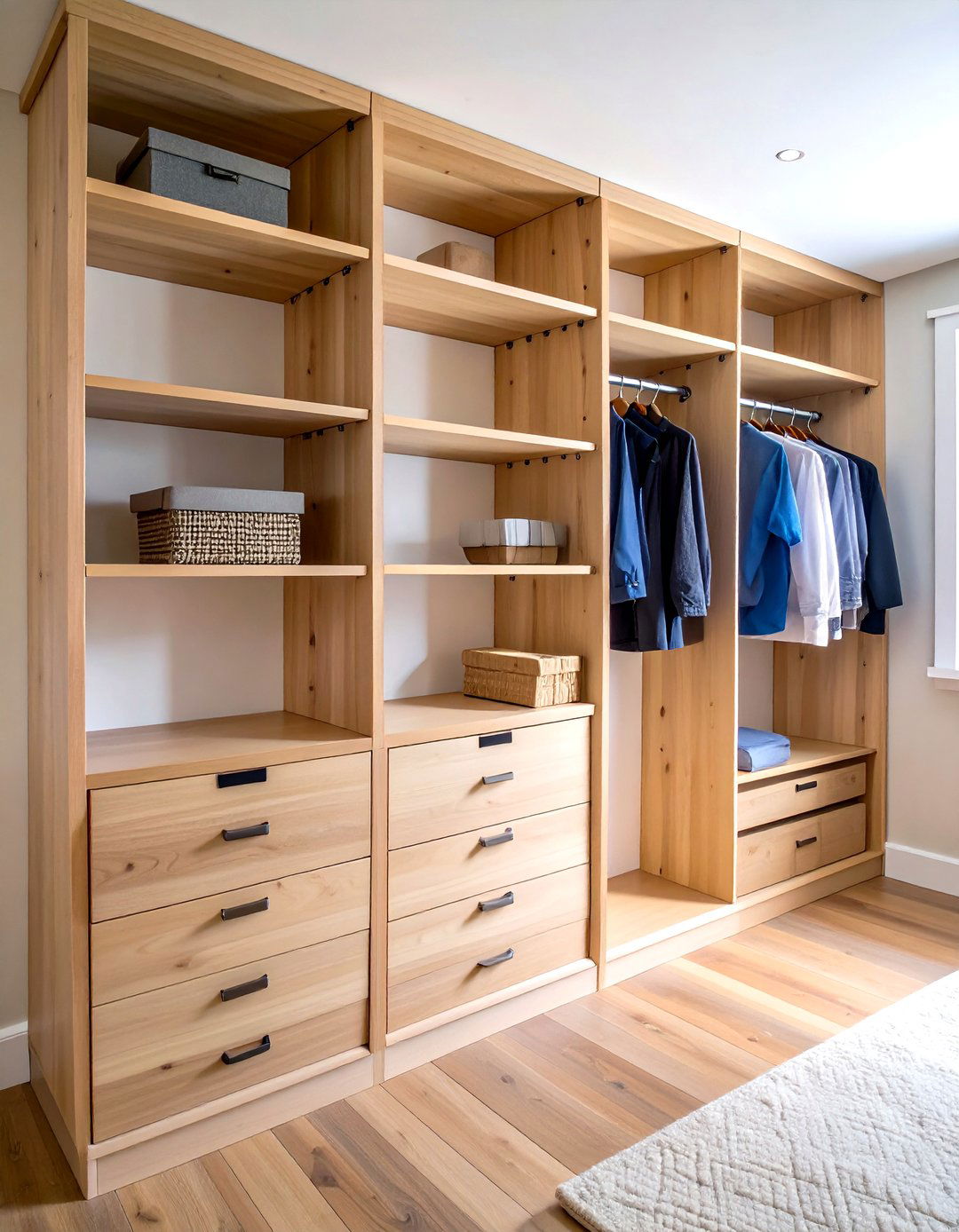
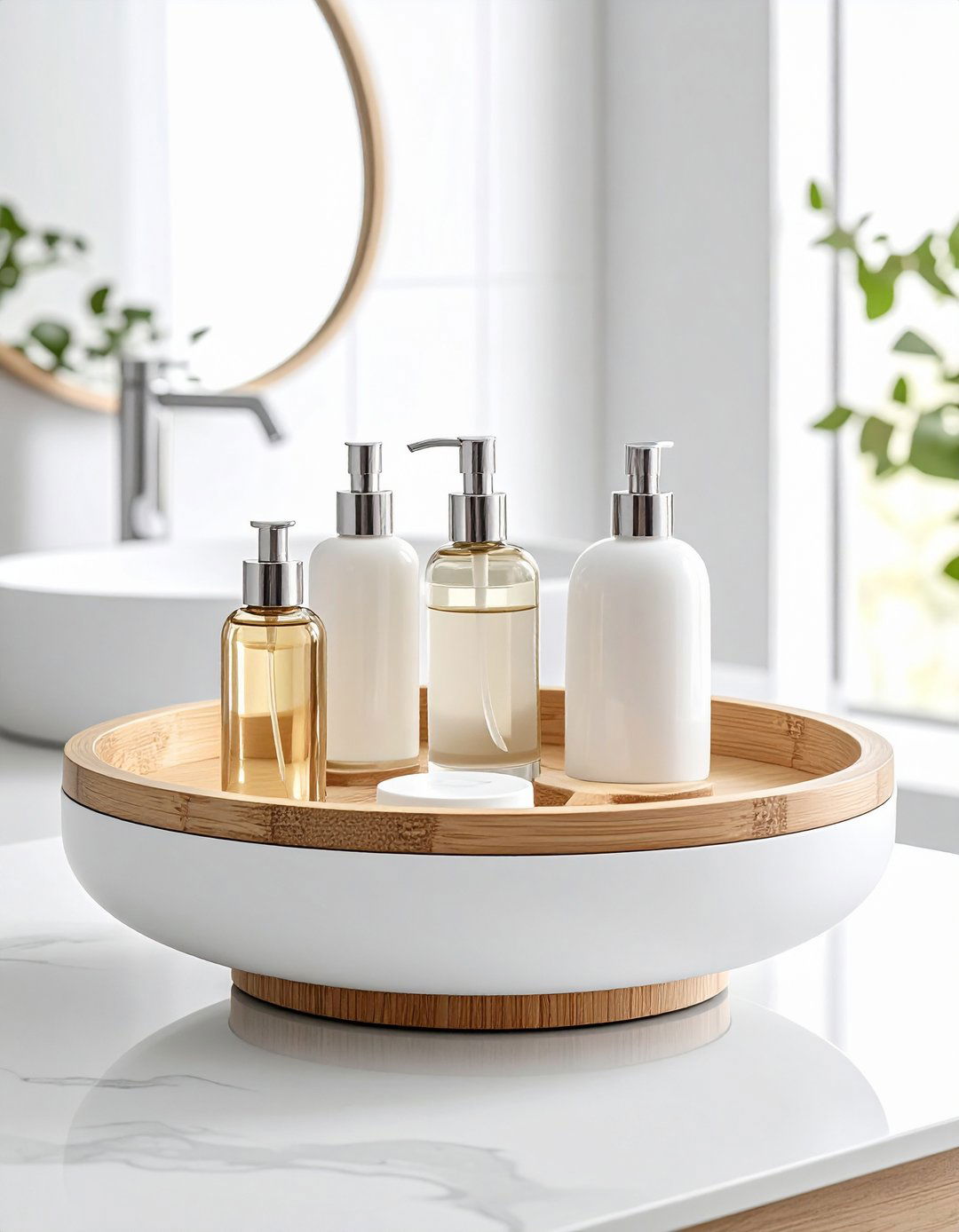

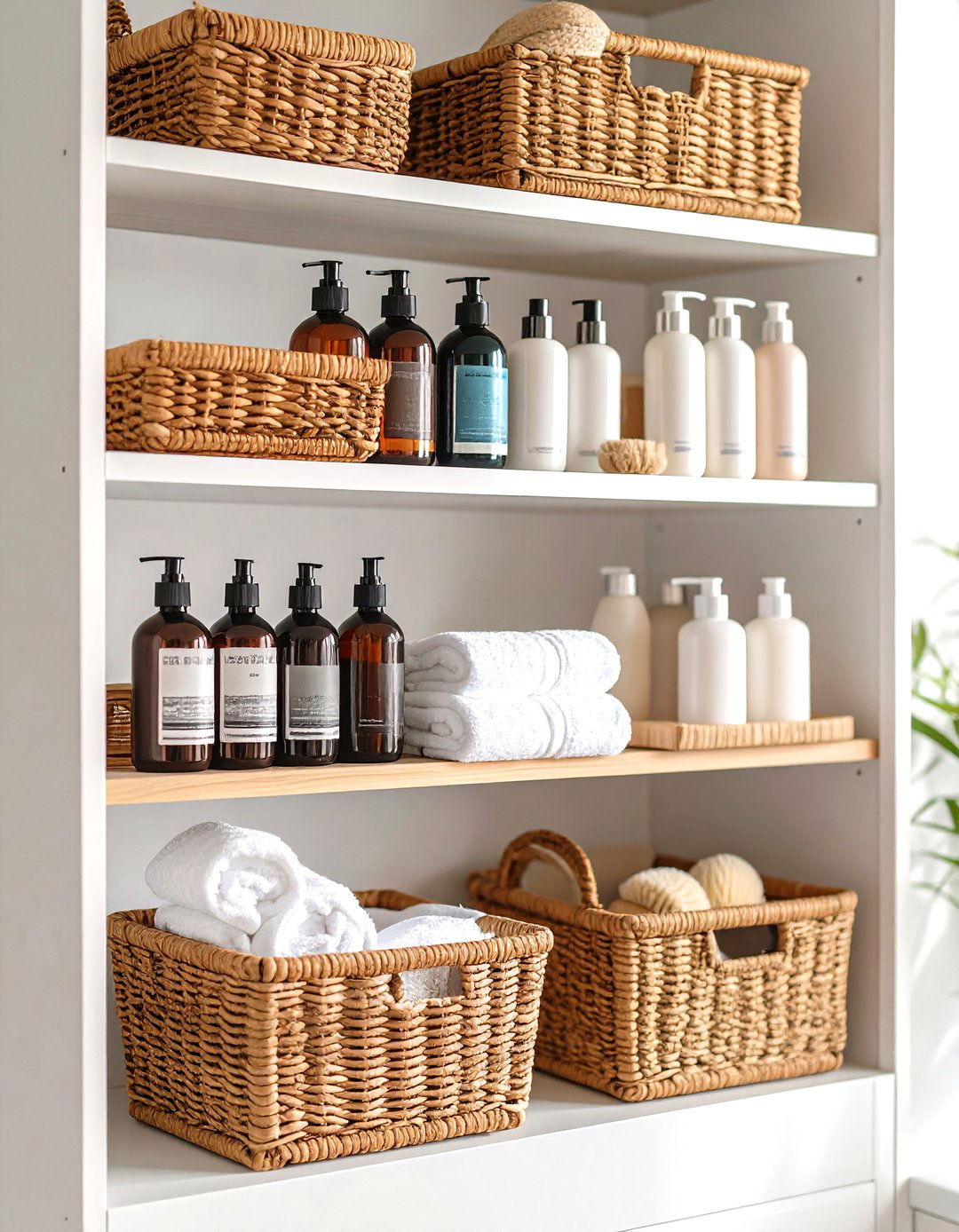



Leave a Reply